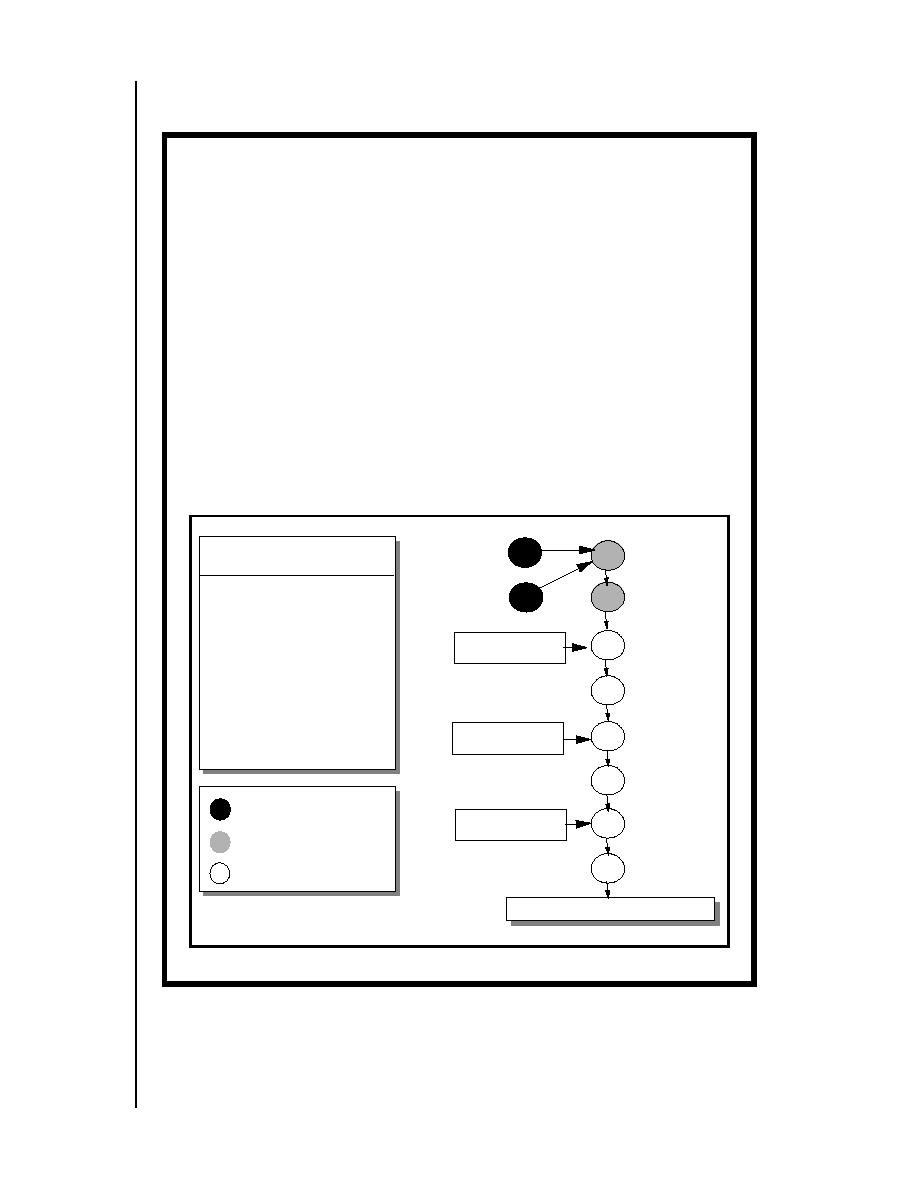 |
|||
|
|
|||
|
Page Title:
Figure 1 Developing Logic Diagrams |
|
||
| ||||||||||
|
|  Lessons Learned Handbook:
DOE-HDBK-7502-95
Figure 1
Developing Logic Diagrams
Logic diagrams can effectively be used to present lessons learned progra m
development activities or to describe lessons learned processes or procedures .
Logic diagrams generally do not have dates attached. Rather, they provide a
graphical depiction of the activities that will be achieved, the relationships between
these activities and the order in which they will be accomplished. In some cases, it
may be helpful to generate det ailed logic diagrams focusing on specific activities or
subcomponents of major activities. Logic diagrams should be constructed to portray
the steps necessary to take an activity from conception to the desired en d
condition. The diagrams can represent activity paths in series, in parallel, or i n
combinations (series and parallel). The information included in the logic diagra m
may also contain key interface requirements. These r equirements may include both
programmatic and operational interfaces necessary to complete the events an d
activities shown in the logic diagram.
Sample Logic Diagram for Lessons Learned Program Development
Logic Activities for Lessons
1
2
Learned Program Development
1. Incorp. in Policies
3
4
& Procedures
2. Program Description
3. Management Plan
Corporate Policy
6
4. Identify Coordinators
Interface
5. Communication Plan
6. Implementation Tools
5
7. Training
8. Program Integration
Training Office
7
9. Self Assessment Plan
Interface
10. Perf. Measurement Plan
9
Activity Complete
Strategic Plan,
8
Budget Interface
Activity Partially Complete
10
Activity Not Started
Complete Program Development
Page 5
|
|
Privacy Statement - Press Release - Copyright Information. - Contact Us |